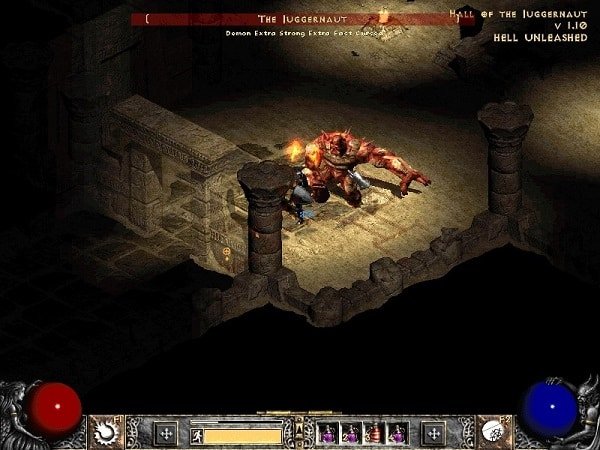
After being invited to participate in a group interview with Michael Bukowski, Project Lead, and Robert Gallerani, Studio Design Director, ahead of the release of Diablo II: Resurrected this week on September 23rd, I jumped at the chance! We covered a lot of ground, starting with the team’s approach to updating Diablo II and progressing to any future plans for Diablo II: Reforged. There were no bombshells dropped about development, but it was a good conversation that took some unexpected D2R runes and turns along the way.
Due to the fact that Diablo III is a game that pretty clearly guides the player through everything, and that players must complete the story on normal mode, which is, for the most part, not very challenging in general, while Diabollai II is anything but, it’s hard to say which is more difficult. It was clear from the little I played that Diablo II doesn’t hold your hand at all and is a very different game from Diablo 3. With that in mind, I’ve been particularly interested in how the development team approached balancing the needs of old fans, who ostensibly want an experience that is as close to the original as possible, with the needs of Diablo III players, who might be put off by not always knowing what they needed to do or some of the harder difficulty early in the game, among other things.
They attempted to think about how any changes they might make would affect the overall experience of D2R if they were to make them. Making the bosses easier than they were before, for example, was not an option because it would fundamentally alter how the game played. However, going into your friend’s list and inviting someone to your game is something they could do that would not alter the original experience of Diablo II in any way.
Moreover, he went on to clarify that in areas where they decided to make a change but weren’t sure whether or not it would have a significant impact on the experience of playing Diablo II, they decided to let the players decide whether or not they wanted that change to be active or not. One prominent example is the auto gold pickup feature, which, by eliminating the need to run around collecting all of your gold from mobs, alters the gameplay experience a little bit. After all, it eliminates the possibility of failing to pay close enough attention and thus missing out on some valuable gold. However, having it is a huge quality of life benefit, and I prefer having it on rather than not having it at all. However, the team recognized that some players might object to this, so they provided the option to turn it on or off. It appears that allowing players to have this level of customization will be a wise decision in the long run. They were thinking specifically about how many modern games of this type allow a great deal of player control through the settings menu, and how allowing these options brings D2R ladder items online more in line with current game standards.
Because having everything work exactly the same as it does on PC would result in a poor console experience, they quickly focused on adding action buttons for consoles while leaving them out of the PC version in order to preserve the PC experience. When asked about inventory, Gallerani responded by stating that initially, on consoles, they thought it would be a list similar to D3’s inventory, but that this became an issue because, with cross-play, the computer wouldn’t know where to put things when you returned to the PC. Additionally, the lack of the ability to choose where items should be placed in your inventory felt like it detracted from the overall experience of D2R.
When it came to updating the graphics, Bukowski pointed out that the most effective way to produce the best end product that was the most faithful to the original was to build a new graphics engine from the ground up. The director also mentioned that they used a lot of original concept art to ensure that D2 remained true to the original vision. He also mentioned that they attempted to increase the amount of lighting at one point, but quickly realized that this had an adverse effect on the game’s gameplay. Gellerani went on to say, “We never intended for you to be able to get more or less information by switching graphics. “As a result, lighting was extremely important because the game is dark. . . When we first started doing things, my wooden club got stuck in a puddle of mud, and it was dark out, so I couldn’t see it. Upon further examination, you realize that the club is made of wood and is stuck in the mud. In essence, increasing the amount of lighting in D2 made some aspects of the game too easy and took away some of the exploration elements.
More Discussion About The Team Go
There was also some discussion about how the team went about deciding which bugs to fix and which ones to leave alone and how they came to that decision. This time around, the fundamental rule of preserving the players’ original experience served as the guideline. The developers felt compelled to address specific bugs that allowed for things such as item duplication because those bugs altered the Diablo II experience.